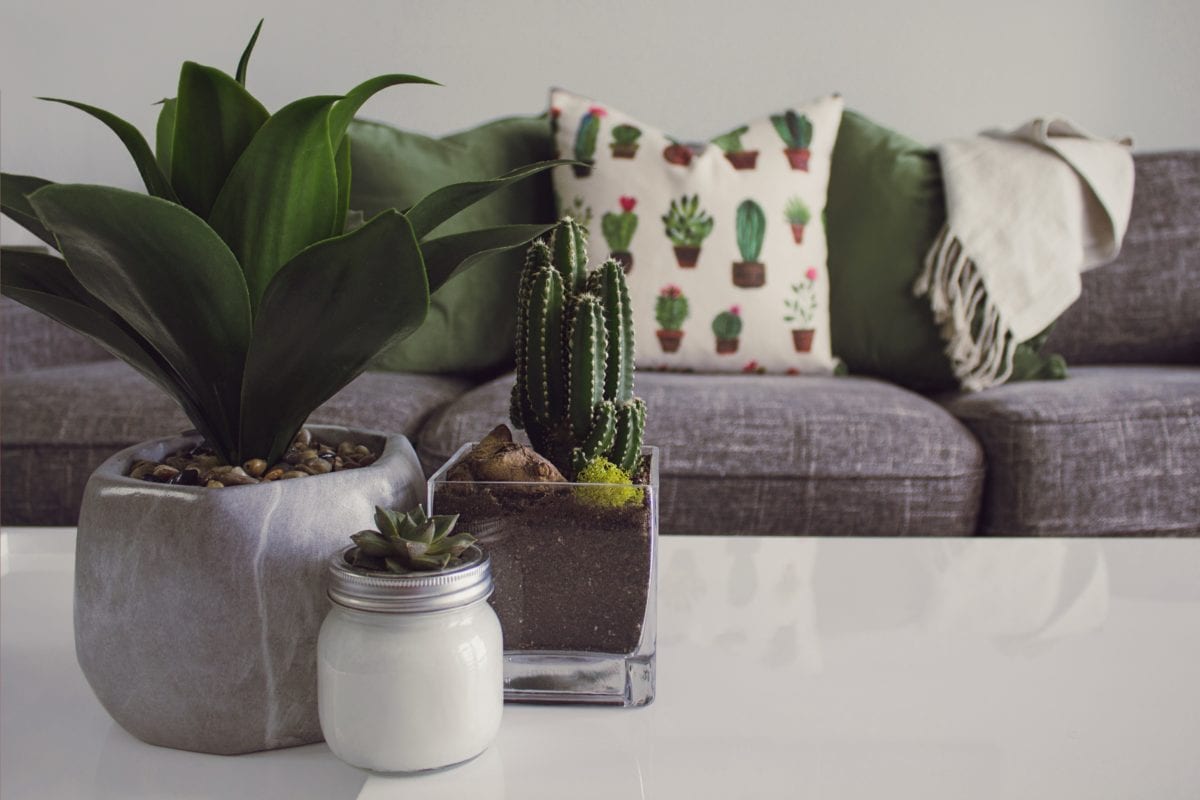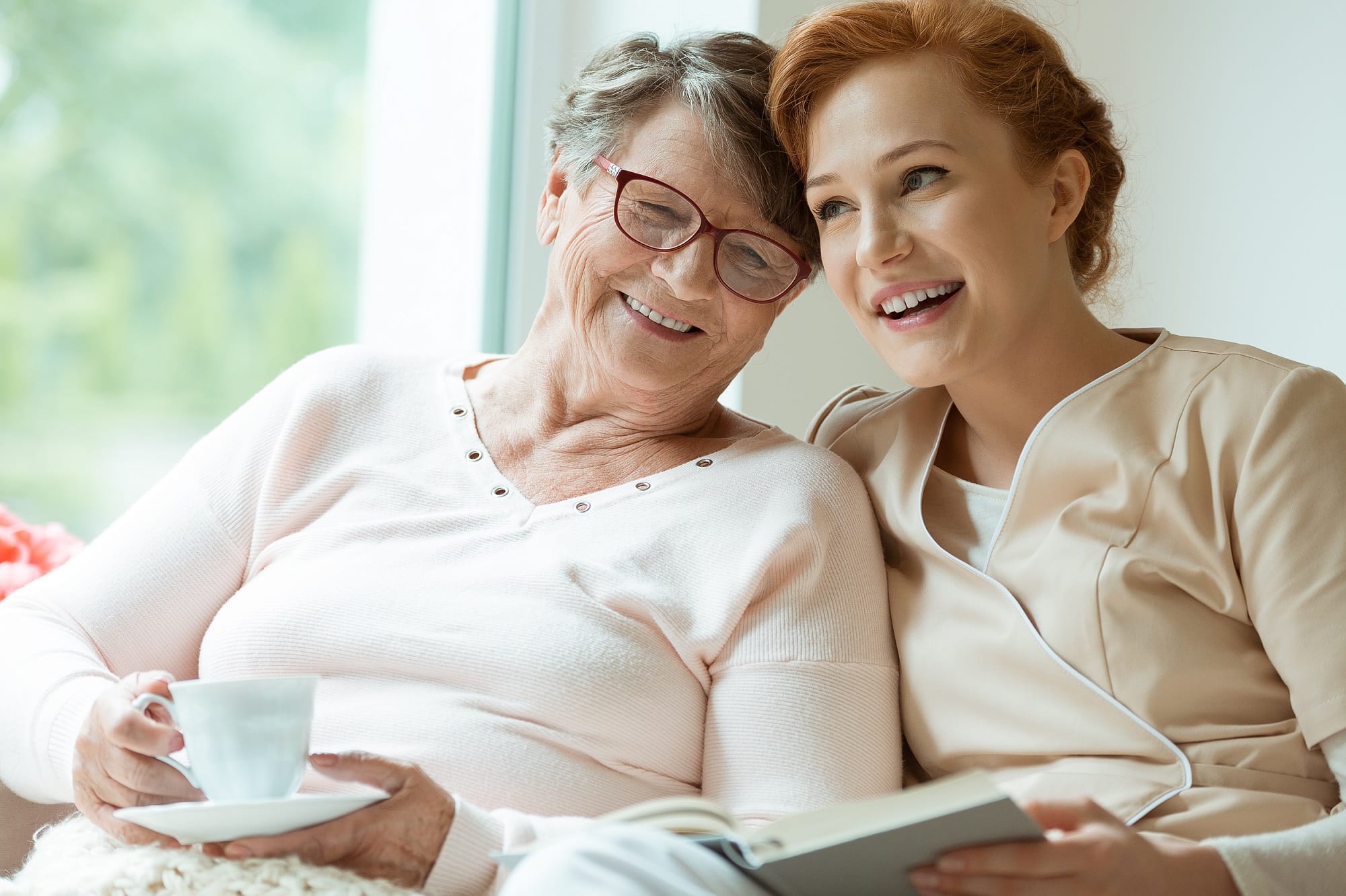Connected care and remote patient monitoring prove to be cost-effective methods to improve patient outcomes, medication adherence, and patient satisfaction
Exclusive technology from Ōmcare aims to eliminate common breakdown in chain of communication between patients, providers, and family caregivers.
By Lisa Lavin, founder and CEO, Ōmcare
The United States population is aging and, in the process, they will require more in the way of long-term care support and services. In fact, it’s estimated that between 2015 and 2050, the senior population will more than triple, with half of these individuals expected to need long-term care, which will come from either skilled nursing facilities or from adult children or family members. According to projections produced by the Congressional Budget Office, due to population growth, long-term care expenses could more than double from 1.3% of gross domestic product (GDP) in 2010 to 3% of GDP in 2050.[i]
In either scenario, the high cost of care creates financial hardships for individuals and families, taxes the personal time and relationships between family members, and can even impact the professional lives of caregivers. According to a 2016 report by AARP, family caregivers are spending roughly $7,000 per year ($6,954) in all out-of-pocket costs related to caregiving: household expenses, medical expenses, and more.[ii] The average family caregiver spends roughly $7,000 per year, or nearly 20 percent of their annual income, on out-of-pocket costs, according to AARP estimates.[i]
A common issue that often complicates caregiving, influences patient outcomes, and contributes to rising costs, is lack of medication adherence by patients. Nonadherence accounts for up to 50% of treatment failures, around 125,000 deaths, and up to 25% of hospitalizations each year in the United States.[iii] Studies show that 26% of readmissions are potentially preventable and medication-related, the most common of which was nonadherence due to patient choice (23.8%).[iv]
According to estimates by the IMS Institute, better medication management could produce $213 billion in savings annually, of which $105 billion would be from improved adherence.[v]
The ripple effect of caregiving needs
While the impact of increased caregiving needs for the aging population are many, two of the most significant areas of impact are related to cost and caregivers.
Financial impact. With healthcare costs set to hit more than $2.3 trillion, the need for more cost-efficient care has never been more important. Consider the fact that the annual median cost for nursing facilities ($97,455 for a private room) is more than double the median income of older households ($42,113). Likewise, according to the National Association of Home Care, the average cost of care from a skilled nursing facility is $544 dollars per day, while the average cost of home health care per visit is $132 dollars.[i]
On average, an American turning 65 today will incur $138,000 in future long-term care costs.[ii] Families will pay about half of the costs themselves out-of-pocket, with the rest covered by public programs and private insurance.[x] While most people with long-term care needs will spend relatively little on their care, about one in six (17%) will spend at least $100,000 out-of-pocket.[i]
Caregiver impact. Approximately 35 million Americans provided unpaid care to an adult age 50 or older in 2015. The vast majority (85%) were caregivers for a relative, primarily an aging parent.[vi] The term ‘sandwich generation' – the label used to describe adult children who are simultaneously caring for their children and their aging parents – is becoming so commonplace that it was added to the Merriam-Webster Dictionary in 2006. However, the dictionary fails to mention the heavy financial and emotional stress that being a part of this generation can cause on caregivers.[vi] Caregivers often experience the following:
- Caregivers report high rates of depressive symptoms and mental health problems, compounded with the physical strain of caring for someone who cannot perform activities of daily living, such as bathing, grooming and other personal care activities.[vii]
- 6 out of 10 (61%) caregivers experience at least one change in their employment due to caregiving such as cutting back work hours, taking a leave of absence, receiving a warning about performance/attendance, among others.[viii]
- 49% arrive to their place of work late/leave early/take time off, 15% take a leave of absence, 14% reduce their hours/take a demotion, 7% receive a warning about performance/attendance, 5% turn down a promotion, 4% choose early retirement, 3% lose job benefits, and 6% give up working entirely.[viii]
Further exacerbating these factors is the poor or inconsistent communication that occurs between patients, caregivers, and healthcare providers. A study by the Accreditation Council for Graduate Medical Education (ACGME) found that 69% of health care providers do not have a standardized hand-off process – a real-time process of passing patient information from one caregiver to another – and only 20% have some standardization. This lack of process can create inaccuracies that lead to extended stays in clinical facilities or that complicate medication and therapy adherence outcomes.[ix]
Telehealth solutions impact all stages of care
Amidst rising costs and changing demographic needs, telemedicine has emerged as a viable solution for doctors, patients, employers, and insurance providers to cut costs and save money.[x] It’s no surprise then that utilization of telemedicine is growing. According to Deloitte, physicians conducted about 100 million telemedicine appointments globally in 2014, which generated potential savings of more than $5 billion when compared to the cost of in-person doctor visits.[x] From 2014 to 2018, the use of non-hospital-based provider-to-patient telehealth grew 1,393%.[xi]
New telehealth and remote monitoring technologies are fundamentally changing the way people interact with health care.[xii]
Remote patient monitoring
Remote patient monitoring is a digital health solution that captures and records patient physiologic data outside of a traditional health care environment.[xii] As providers increasingly turn to remote patient monitoring technology to improve patient outcomes, limit costs, and cut down on using more expensive services, healthcare industry newcomers and legacy players alike are vying for a piece of this growing market.[xiii]
Remote patient monitoring is particularly helpful in managing chronic conditions and improving medication adherence because it provides visibility into patients’ lives outside of their scheduled appointments, which has historically been a barrier to timely and effective diagnosis and management.[xiii]
With data collected over time, care team members can manage and treat chronic conditions in a way that is effective, timely, and realistic to the patient and caregiver’s lifestyles. The data generated through this approach can help facilitate conversations between patients and physicians and facilitate opportunities to intervene quickly to avoid complications.[xiii]
In addition to providing care teams with better, more actionable information earlier, remote patient monitoring has been praised for engaging patients in their own care by providing them access to their own data so they can better understand the impact of their treatment and advocate for their medical needs.[xiv]
Connect caregivers with the right technology
From tracking vital signs with remote monitoring devices to communicating quickly with a nurse through a web portal to receiving on-the-spot care from a doctor via video chat, telehealth aims to make life easier.[xiv]
The right technology can give health care providers and caregivers a means of communication that is essential to improving patient outcomes. For example, patient monitoring programs that allow virtual check-ins enable patients to extend the duration between doctor's visits or unplanned hospital stays. Meanwhile, a KLAS Research report surveying 25 healthcare organizations found 38% of healthcare organizations using remote patient monitoring programs for chronic disease management reported reduced admissions, while 17% cited cost reductions.[xiii]
Older adults with long-term care needs should be able to live independently as they age while limiting stress on family caregivers. Telehealth strategies can support this process by improving access to care and ensuring its quality, while reducing the strain put on family members by increased time requirements, added mental and emotional stress, and financial burdens of providing long-term care to an aging loved one. The right technology can address these issues and allow for loved ones to age gracefully and in their best health.
About Ōmcare
Ōmcare is a health technology company aspiring to extend the reach of the caregiver, increase medication adherence, and to improve treatment outcomes by harnessing the power of remote care. We aim to achieve this through our proprietary interactive technologies - promising right pill, right time, right person. By partnering with pharmacies, payers, providers, and family caregivers, our vision is to help people live healthier, more vibrant, independent lives.
References
[i] "Long-Term Services And Supports For Older Americans: Risks And Financing Research Brief". ASPE, 2019, https://aspe.hhs.gov/basic-report/long-term-services-and-supports-older-americans-risks-and-financing-research-brief.
[ii] "Caregiving Innovation Frontiers". Aarp.Org, 2019, https://www.aarp.org/content/dam/aarp/home-and-family/personal-technology/2017/08/caregiving-innovation-frontiers-2017-aarp.pdf.
[iii] Kim, Jennifer. "Medication Adherence: The Elephant In The Room". Uspharmacist.Com, 2019, https://www.uspharmacist.com/article/medication-adherence-the-elephant-in-the-room.
[iv] "Up To 26% Of Hospital Readmissions Are Preventable And Medication-Based". Drug Topics, 2019, https://www.drugtopics.com/drug-topics/news/26-hospital-readmissions-are-preventable-and-medication-based.
[v] IMS Institute for Healthcare Informatics, “Avoidable Costs in U.S. Healthcare: The $200 Billion Opportunity from Using Medicines More Responsibly,” June 2013
[vi] "The Sandwich Generation | What Is The Sandwich Generation?". Seniorliving.Org, 2019, https://www.seniorliving.org/caregiving/sandwich-generation/.
[vii] "Caregiver Health | Family Caregiver Alliance". Caregiver.Org, 2019, https://www.caregiver.org/caregiver-health.
[viii] "Caregiving In The U.S.". Aarp.Org, 2019, https://www.aarp.org/content/dam/aarp/ppi/2015/caregiving-in-the-united-states-2015-report-revised.pdf.
[ix] Wagner R, et al. CLER 2016 National Report of Findings, Issue Brief #5: Care Transitions. Chicago, Illinois: Accreditation Council for Graduate Medical Education, March 2017.
[x] "Telemedicine Research Papers: Trends In Healthcare - Evisit". Evisit, 2019, https://evisit.com/resources/telemedicine-trends/.
[xi] fairhealth.org. (2019). A Multilayered Analysis of Telehealth. [online] Available at: https://s3.amazonaws.com/media2.fairhealth.org/whitepaper/asset/A%20Multilayered%20Analysis%20of%20Telehealth%20-%20A%20FAIR%20Health%20White%20Paper.pdf.
[xii] "Digital Health Implementation Playbook". Ama-Assn.Org, 2019, https://www.ama-assn.org/system/files/2018-12/digital-health-implementation-playbook-REV1.pdf
[xiii] "The Technology, Devices, And Benefits Of The Growing Remote Patient Monitoring Market". Business Insider, 2019, https://www.businessinsider.com/remote-patient-monitoring-industry-explained.
[xiv] "Telehealth And Seniors | Updated For 2019 | Aginginplace.Org". Aginginplace.Org, 2019, https://www.aginginplace.org/telehealth-and-seniors/.
Top 3 reasons connected care requires telehealth
Interest in telehealth is increasing rapidly around the world, including here in the U.S. In fact, the telehealth market has grown over 250% since 2015 and is expected to exceed 15% CAGR* through 2025. This growth is attributed tech-enabled services and a regulatory environment that has started to embrace virtual connected care options.
The Health Resources Services Administration defines telehealth as the use of electronic information and telecommunications technologies to support long-distance clinical health care, patient and professional health-related education, public health and health administration. And while many consumers are just now becoming familiar with the term, it is most often understood as two-way video interactions with doctors or other medical professionals.
#1 - Telehealth is a conduit to enabling value based care
Telehealth has traditionally been considered by CMS as a stop-gap for people with access issues, either in rural area or constrained by limited mobility. A number of progressive health systems that are leading the shift to value based or outcomes based payment see telehealth as a critical component to keeping people healthy, especially seniors with multiple conditions who tend to be heavy utilizers.
#2 - The shortage of caregivers will strain an already strained system.
And for those in the Home Health business, incorporating more frequent remote touchpoints using video-enabled technology along with in-home visits aligns with a desire to create a tighter community of caregivers while offering a response to the new and growing shortage of qualified caregivers. By 2050, there will be 19 million Americans over the age of 85. At the same time, the number of available caregivers is projected to stay constant or decrease.
#3 - Cost avoidance and increased patient satisfaction is more possible.
Ultimately, weaving telehealth into the tapestry of the full healthcare continuum addresses everything from cost avoidance to better outcomes and greater patient satisfaction. And the data proves it. Organizations that embrace technology as a way to define patient needs and deliver personalized care will weather payment system transitions and demographic shifts much more successfully that those unwilling to see the shortcomings of the status quo.
At Ōmcare, we’re building the tele of telehealth right into our core of what we do. From connecting people to integrating a myriad of point solutions and remote monitoring technologies, we can help realize healthier, more affordable outcomes more quickly. Now, that’s healthy. In more ways than one.
Why in-home care is the next big healthcare opportunity
By Laurie Knutson, President
As you might imagine, having been active in the healthcare community for some 30+ years, I’ve seen some fairly significant changes and shifts in our industry. From the inception of Consumerism and High Deductible Plans, to Medicare Part D, implementation of the ACA, and a shift to retail medicine and growing need to redefine medication adherence, the industry keeps evolving.
Each change is well-intended and disruptive for stakeholders and individuals. And in every case, these changes have called for a societal shift and consideration for new ways of managing our health - financially, systematically and behaviorally.
And try as we might to design around the individual, it’s a struggle. We struggle to consider how regulations, advancing technology, payment models, and structural change impacts day-to-day lives and the care journey for each individual. The goal of putting the person at the center of the care model has been difficult to achieve.
But wait, at the intersection of technology and economic necessity there is innovation!
As the population ages, the broader healthcare ecosystem is beginning to embrace new thinking around what really matters to people. And this time, care actually IS centered around the person. It’s in-home care. Now more than ever, seniors in particular have a strong desire to remain in their homes as long as possible and the focus of the healthcare system is shifting to how best to achieve that end. Aging in place, in-home is valuable to the individual, their caregivers, and to the broader healthcare system. Here are 3 reasons why:
- In-home care saves money
The cost of healthcare isn’t just increasing, it’s becoming down right unaffordable. As the personal cost of care escalates, the vast majority of seniors will spend their entire retirement savings to keep up long before they planned. The average out of pocket medical costs for a 65 year old couple will be $218,000 over the next 20 years, excluding long-term care. And skilled nursing facility care center expense averages around $200,0001 year. Leaving the home can be financially devastating, and for many, it’s simply out of the question. Remaining in-home longer supported by care as needed, is more than the best option, it’s often the only option.
- In-home care complements an already evolving system
While retail offerings (ie., MinuteClinic, mobile care units, etc.) offer some level of convenience, seniors generally continue to receive care at their primary care clinic. Doctor visits require mobility, coordinating appointments and can be costly too. For many, getting to doctor appointments becomes the primary focus of day-to-day life. The increasing availability of telehealth and supplemental in-home services offers a new level of convenience for seniors when care can be safely administered without compromising quality. CMS is warming to the benefits of in-home care by broadening eligibility criteria and payment for appropriate telehealth and home-based care.
- In-home care addresses the impending shortage of caregiver resources
Oftentimes, remaining in-home requires active support from family caregivers. Employers are feeling the productivity pinch when employee caregiver responsibilities burden their time, wallets, and their own health. In situations where a family member isn’t a support option, individuals must retain community resources and paid staff to subsidize their care needs. The problem is that future demographics point to a looming human resource crisis nearly as alarming as the financial pressures of an aging population. Today there are 10 caregiver resources for every senior. By the year 2050, when the majority of baby boomers are over 75, that ratio will shrink to 3.2 Home Care providers and Senior Living facilities are already struggling to find workers. We need to embrace new models of remote care that align with demographics.
So where do we go from here? If in-home care saves money but the uptake in more non-traditional care models is slow, how might we get to both more quickly? And how can we better support family caregivers who fill the gaps that enable loved ones to age in place? Therein lies opportunity.
Startups, disruptors, and newcomers to in-home care have a role to play. I’m talking about the Best Buy, Alexa, Nest, Apple, Amazon, Simple Meds and Ōmcare’s of the world. New technologies are enabling a remarkable shift from an acute-case, illness-based system to a more connected system that includes care many professionals in many places. From personal care assistance, home healthcare providers, tech-enabled home security, remote monitoring and medication assistance, supporting the many needs of those aging in place is both an opportunity and a necessary change. There will certainly be disruption to existing stakeholders, however meeting the growing needs of our aging population is in everybody’s best interest. Creating a community of caregivers and using technology to align resources will help ensure better care, greater independence, financial sustainability, and well-being for the future.
There’s no silver bullet here. Instead, a more connected ecosystem of solutions will support our senior population segment and better serve their needs. And those who build into the fabric of existing systems will do this best, leveraging the power and creativity of many to keep the consumer at the center of their care.
At Ōmcare, we are passionate about connecting people with the resources they need to maximize their independence. As a video conduit into the home that enables remote medication dispensing, we address the most basic reason people are forced to leave their home; they can no longer manage their medications. We offer peace of mind to family caregivers, and more frequent monitoring and face-to-face conversations gives clinicians what they need to keep seniors healthy and well at home. And it’s easy to use, eliminating the need for multiple devices and logins.
Ōmcare makes the extension of care at home possible - for a longer period of time. We know that’s what matters most to seniors and their caregivers and we invite others to connect, work with and join us to achieve the goal of independence through better remote care, at home.
1 Source-Fool: https://www.fool.com/retirement/general/2016/01/26/20-retirement-stats-that-will-blow-you-away.aspx
2 Source- AARP: https://www.aarp.org/home-family/caregiving/info-08-2013/the-aging-of-the-baby-boom-and-the-growing-care-gap-AARP-ppi-ltc.html
What is medication non-adherence? Health and financial risks
Medication non-adherence. It’s a big problem. People are not taking the right pill at the right time. The health and financial risks associated with medication non-adherence impacts individuals, families and caregivers. Today, millions of people depend on others for their medications and, for those who manage multiple medications, it can be complicated and confusing. For many people, loved ones can’t always be there to keep track.
The Financial and Health Risks
Nearly 37% of seniors take 5 or more medications and one out of every ten seniors hospitalized are the result of the consumption of ill-timed, mistaken, or missed medication. The cost of medication non-adherence exceeds $300B and more than 125,000* deaths annually in the United States. That’s a high price to pay for both individuals and the healthcare system more broadly.
In addition to all of this information, it’s important to call attention to the cost of non-adherence at a more personal level, as oftentimes the expense of not taking medications shows up indirectly. The National Council Medical Director Institute published a report in September, 2018 stating that “medication non-adherence accounts for 30-50 percent of treatment failures and 10-25 percent of all hospital and nursing home admissions.” A host of other expenses from the ambulance to the Emergency Room are triggered by non-adherence. These unplanned expenses can be devastating for individuals living on a fixed income, and put additional financial pressure on Medicare and other public programs.
As it relates to better health, the cost of ill-planned or timed drug interactions means risking outcomes that could be debilitating to the patient in more ways than one. For many chronic conditions, improved health outcomes are difficult without proper adherence. A Network for Excellent in Health Innovation (NEHI) study showed that non-adherence could be tied back to an increased risk of hospitalization, while also providing evidence that mortality rate for heart disease and diabetes was 12.1 percent for non-adherence patients compared to 6.7 for adherent patients.** This is just one example of the implications of non-adherence reported in a specific population.
Reducing the Risks
So what can we do to reduce these risks? Several options are: increase access to or engaging the services of a paid caregiver, add more frequent communication with your provider to monitor your adherence activity, or find a technology-enabled medication assistance solution that your loved one can manage on their own. Since most people are reluctant to admit their shortcomings in taking their meds, it’s often unclear when non-adherence has become a liability.
Trust in Ōmcare
That’s why Ōmcare was created: to address medication non-adherence and offer remote care solutions through simple, face-to-face interactions and monitored remote pill dispensing that reduces the risk to financial and personal health outcomes. With Ōmcare you have remote, visual confirmation of adherence and a complete medication history that gives caregivers peace of mind, and provides better information for physicians and nurses to treat and diagnose.
Stay up to date with the latest from Omcare and the release of the Telemed System by subscribing to our email.
Sources:
*https://www.nacds.org/news/the-cost-of-medication-non-adherence/
**Network for Excellence in Health Innovation. (2016, September). Better Uses of Medicines for Diabetes Patients. Retrieved from https://www.nehi.net/writable/publication_files/file/better_use_of_medicine_for_patients_wieth_diabetes_nehi_9.8.2016.pdf
https://www.ncbi.nlm.nih.gov/pmc/articles/PMC3934668/
Family member vs in-home nurse: pros and cons
The big decision that many families must make when it comes to taking care of an elderly family member is when is the time, if ever, to transition them to a nursing home, often called Skilled Nursing Facilities or SNFs. For some families, nursing homes are the best option when considering all the different factors, such as cost, increasing health concerns and the willingness of the elder to move out of their home into a place that is unfamiliar.
For others, the best course of action is to have your parent/grandparent continue to live in their home and have either a family member or in-home nurse take care of them. But which option should you choose? For families facing this decision, they must look at all possible scenarios to see which works best for their elderly family member and themselves, as well as the financial implications of each option.
To help you decide what route to take, here are the pros and cons to a family member caretaker vs. an in-home nurse.
Family Member Caretaker
Pros
Increased Time with Family
Many seniors experience feelings of loneliness, and by being an active participant in their life by helping take care of them, family member caretakers can help alleviate these feelings.
Decrease Expenses
By having a family member be the primary caretaker, you can avoid paying extra money for an in-home nurse, which can be quite costly, especially if you’re having trouble using insurance to help cover some of the costs.
Cons
Not Prepared for Medical Emergency
Nurses tend to be more expensive because they are providing an important service to your family member. In the case of an emergency that you are not prepared to handle, an in-home nurse is better-equipped to act fast and appropriately to any situation.
Restricted Freedom
You may take off work and free-up your schedule to give the amount of care that is necessary for the senior in your family, but it can be hard to make sure you are available no matter when to help out. There is a certain level of restricted freedom one must expect if they choose to take on the responsibility of primary caretaker, and sometimes it can be hard to make time for yourself.
In-Home Caretaker
Pros
Full-Time Care
With a nurse, you have the assurance that at all times, your family member is in safe hands. An in-home nurse’s primary responsibility is to look out and care for their patient. You’ll free up your own time, while not having to worry that no one is home to assist your loved one.
Personal Interaction
A new caregiver will allow the senior in your family to build a new relationship, which is great for improving overall happiness and the emotional well-being of your loved one.
Cons
Expensive
Nurses can be costly, and for a good reason, as the service they are providing is extremely important. However, one must always consider the cost when it comes to bringing in a full-time in-home nurse.
Finding Quality Care Can Be Hard
This isn’t as difficult as it may have been 15 years ago, as there are plenty of resources out there to help you narrow your search and find the best fit for your family member’s needs and your own. However, you do want to make sure that you find that perfect fit, which may take some time.
Consider Ōmcare to Assist in the Caretaking of Your Loved Ones
As you can see, there are many options to consider when thinking about care - in home or otherwise for the caretaking of your loved one. As you begin to explore the vast landscape, from partially-assisted to full in-home care or on your own, you’ll benefit from knowing that there are choices. No matter which option is best for your family, Ōmcare’s Telemed System offers caregivers of all types the ability to see, speak to, and confirm appropriate medication from anywhere. This new product, launching early 2019, allows you to make sure that your loved ones are taking their prescribed medicines through a video chat interface. It even dispenses the pills to ensure they receive the right pill at the right time. When you can’t physically be there to take care of your loved one, Ōmcare still gives you a chance to be there for them.
Connect with us by subscribing to our email and stay up to date on the latest product releases and news from Ōmcare.
Aging in place 101: a not-so-obvious list of top caregiver resources to try out
The work of a caregiver is never-ending. Strong resources are key to empowerment for both the caregiver and those they are caring for. And while some caregivers are just coming to learn about the effort that goes into supporting and empowering those individuals who are aging in place, others have been a formal caregiver for most of their lives. Whatever the stage, today there are a wide array of organizations and resources working to both support and recognize the work of caregivers. A foundational understanding of the caregiver tools and resources landscape can be a helpful first step to supporting the aging in place process, and for others, a good reminder too of who can truly help.
In-Home Assessment
Literally starting at home is often the best place to start. From emergency contact lists to outlining the many items related to ongoing maintenance and repair of the home, the details that need managing in addition to the caretaking of the individual themselves is yet another thing for caregivers to consider.
AARP
offers a free Home Guide Kit that includes worksheets, tips and resources (sometimes with meetings in your state) as a way to sort thru the many items on the caretaker to-do list, when staying at home is a priority.
New to the market is a well-known Best Buy. The services from electronics innovator has been refined for seniors through the new
Best Buy Assured Living
offering. Included is an extension of the blue shirt team – referred to as Advisors. Members of the Advisor team can:
- Assess caregiving needs and help determine what's right for your family.
- Walk individuals through the benefits of Assured Living, including tools and support from the experts at Mayo Clinic and UnitedHealthcare.
- Act as your personal guide
- Be another trusted resource to make living at home easier and more comfortable through the use of technology.
Organizations for Hire In-Home
The coalescence of organizations surrounding the caregiver and the individual in need of support and empowerment is growing. Today, these entities focus on assisting those who assist others while offering the sort of one-to-one care so many are seeking:
- BrightStar Care grew out of the vision and idea that entrepreneur Shelly Sun in 2002 from one location in Gurnee, IL and today offers franchise locations across the country for in-home care and medical staffing. A deep menu of offerings underneath the categories of personal, transitional and skilled nursing care, are available to aging in place individuals and their family members.
- Home Instead was started by Paul and Lori Hogan in 1994 in Omaha, Nebraska. Paul's own family experience caring led him to realize many families could use the help of an in-home caregiver. He and Lori set about creating a company to help seniors to live independently at home. Today, the network has grown to include more than 1,000 franchises around the world -- including this office in Houston, TX. Consider finding a Home Instead organization within your community.
Workplace Support You’re Already Paying For
Don’t forget the resources that are often right in front of you. Many workplaces today offer counseling, support and advisory services through their Employee Assistance Program (EAP). While the callout to the caregiver may not always be self-evident, or even an obvious menu option for all EAP’s today, it’s worth considering a call and checking into as the counseling and professional services available. As these entities often operate at the highest level in this space, providing yet another backdrop of support to you and members of your family. Additionally, they can be a good resource to a plethora of other resources.
Today, Lifeworks focuses on family as one of its 5 areas of support to employees which includes becoming a parent, child care, or caring for an older relative. While your caregiving situation is no doubt a unique one, this resource often has years of experience and staffing to help you thru your journey, wherever you’re at.
While perhaps never an easy task, supporting those aging in place can be rewarding in that is offers insight into the capabilities of others. And in the end, these are likely resources who can be a constant resource to you and your family. Sometimes filling in when you can’t assist, but other times offering the roadmap to what your role supporting aging in place looks like both now and in the future. What more might anyone ask for than that? An army of resources for aging in place at your fingertips, that’s a 101 lesson plan to get behind sooner rather than later.
Download your personal daily medication chart (tips & alternatives)
Managing medications is not just a daily task, in many ways it’s a never-ending one. Keeping track of what you’re taking can be managed in so many different ways, but which one is best? First, consider what works best for you. Then think about how it might work for someone else to support your daily medication charting efforts. Having the ability to share and show others the way you’re managing your daily medications can be helpful to you and your appointed caregivers. Whether your caregiver is a member of your family or a more formal resource, like a hospital staff member or home health nurse, the ability to share your daily medication chart should be considered when you review the types of charts and tools available to you.
Here are 3 medication charts to consider when managing your daily medication:
1. Paper Might Work Best for You: ePill - FREE
Charts that offer the opportunity to write down, cross off and track the medication you’re taking still works best for many individuals. It’s always easy to look at the item in front of you and put your own information into it in a way that you best understand. Plus, all of the organizing is already done because you just have to fill in the information, on the already designed grid. Unlike other tools though, paper isn’t always as easily shared, so consider who is helping you out each day and what might also be a good way to show this individual your tracking proof too.
2. Electronic Templates Offer Access for All: Best Templates - $12
Tracking your log over time can be another way to monitor the way you’ve taken your meds vs. how they were intended to be taken. Best Templates offers downloadable versions that makes sharing with other easy, in addition to having a log for yourself to review over time.
3. Apps Work Well for Many: MyMedSchedule.com - FREE
With your phone already at your fingertips, the ability to chart the medications you take can be logged and recorded easily and quickly. The MyMed Schedule app allows you to type in and then find the medication you’re taking within its data listing, making set up easy. Establishing reminders by individual medications can then happen to help ensure there’s not a crossover of taking a medication at the wrong time.
Whatever choice you might make for your personal Daily Medication Chart, a top priority remains - taking the right pill, at the right time. More and more, the medications we’re each taking have benefits of their own impacted by combination with another drug. And so tracking, charting, recording and then sharing the information is more important than ever.
The Ōmcare Telemed System will be available in early 2019 enabling remote medication adherence assistance which will put an end to paper charts and reminder apps. Sign up to our email list to receive more information on availability and system features.








